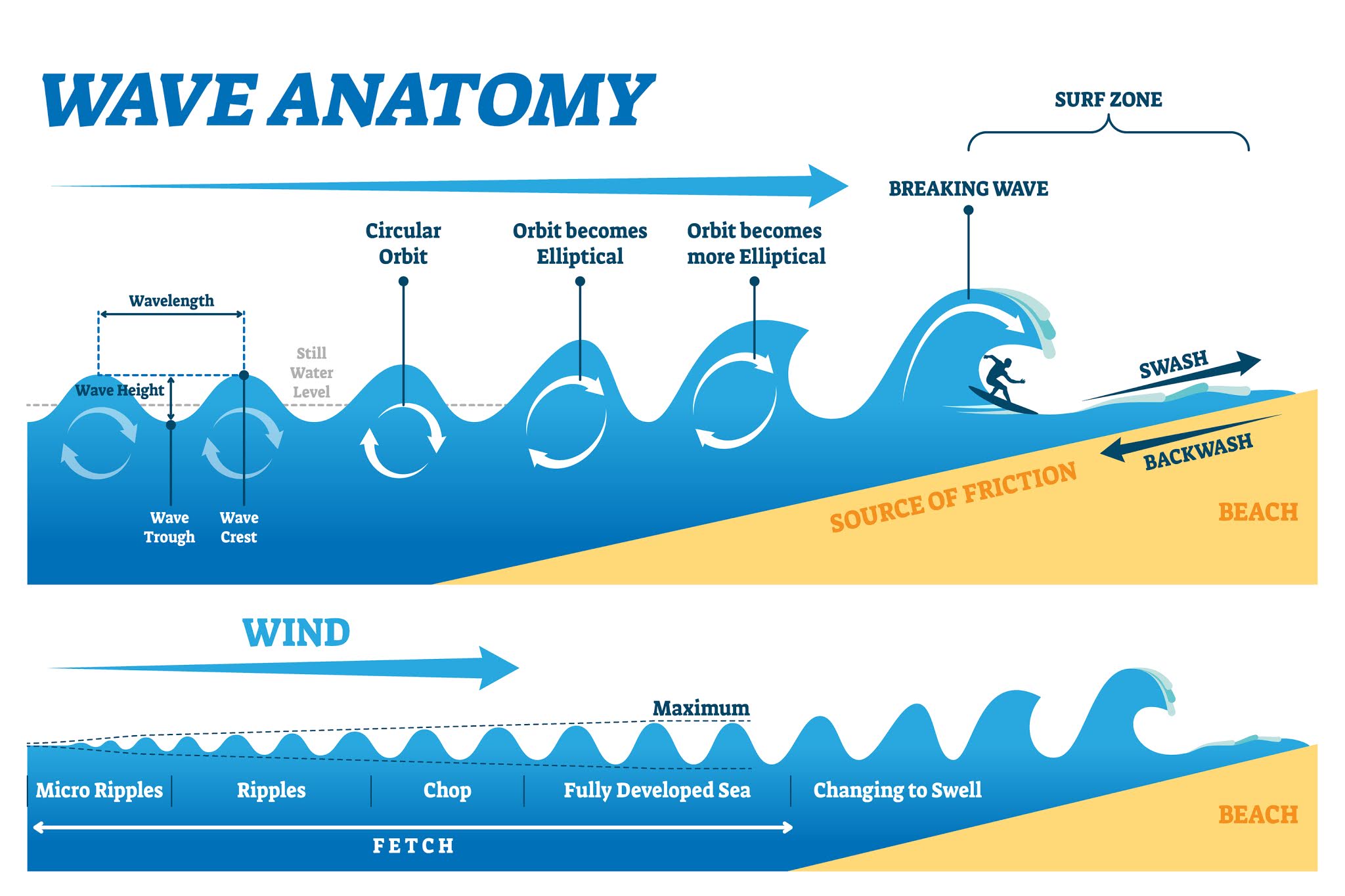The ocean is a mesmerizing entity, constantly shifting and evolving, with each wave telling a story of its own. One of the most fascinating aspects of this natural wonder is the phenomenon known as “wave on wave.” This captivating occurrence happens when two different wave systems meet and interact, creating a stunning display of motion and energy. The resulting spectacle can be both beautiful and powerful, drawing in surfers, scientists, and nature lovers alike to witness its grandeur.
Understanding wave on wave is essential for anyone who wants to explore the ocean more deeply. It encompasses a variety of wave types, including swells, tides, and wind-driven waves, each contributing to the complexity of ocean dynamics. The interaction between these waves can lead to unique conditions that influence marine life, coastal erosion, and even weather patterns. Thus, delving into the science behind wave on wave is not only intriguing but also crucial for various environmental studies.
As we venture into this article, we will explore the intricate mechanics of wave on wave, its implications on our coastlines, and how it has captured the imagination of artists and poets throughout history. From the technical aspects that govern wave behavior to the aesthetic beauty it inspires, wave on wave is a phenomenon worthy of our attention and appreciation.
What is Wave on Wave?
Wave on wave refers to the interaction between two or more wave systems that converge, leading to complex behaviors such as interference, amplification, and even cancellation of waves. This phenomenon is primarily observed in oceanic environments but can also be seen in other bodies of water. Here are some key points to understand about wave on wave:
- It occurs when different wave systems overlap.
- The interaction can lead to larger waves or choppy conditions.
- Wave on wave is a result of various factors including wind speed, direction, and the geographical features of the coastline.
How Does Wave on Wave Occur?
The mechanics behind wave on wave are grounded in physics. When two waves meet, they can interfere with each other in different ways. The interaction can be constructive (where the wave heights combine) or destructive (where the waves cancel each other out). The following factors contribute to this phenomenon:
- Wave Height: Taller waves can dominate interactions.
- Wave Period: The time between waves affects how they overlap.
- Wave Direction: Waves coming from different angles can create unique patterns.
What Are the Effects of Wave on Wave?
The effects of wave on wave can be widespread, influencing both the environment and human activities. Some of the notable impacts include:
- Changes in coastal erosion patterns.
- Alteration of marine habitats.
- Effect on navigation and boating safety.
- Creation of unique surfing conditions.
Who Studies Wave on Wave?
Researchers and scientists from various disciplines study wave on wave to understand its implications better. Oceanographers, marine biologists, and environmental scientists are particularly interested in this phenomenon due to its multifaceted effects on marine ecosystems and coastal regions. Understanding wave dynamics is essential for predicting weather patterns, designing coastal infrastructure, and protecting marine biodiversity.
Can Wave on Wave Be Predicted?
Predicting wave interactions can be complex due to the numerous variables involved. However, advancements in technology have led to better forecasting models. These models take into account factors such as:
- Wind speed and direction.
- Barometric pressure.
- Water temperature variations.
By analyzing these elements, scientists can provide more accurate predictions about wave behavior and possible wave on wave occurrences.
How Has Wave on Wave Inspired Artists?
The beauty of wave on wave has not only captivated scientists but also artists and poets. Its dynamic nature has inspired countless works of art, from paintings to literature. Artists often depict the movement and energy of waves, capturing their essence in various forms. Notable examples include:
- Hokusai's “The Great Wave off Kanagawa,” a famous woodblock print.
- Poems that evoke the emotions tied to the sea and its waves.
What is the Future of Wave on Wave Research?
As climate change continues to impact ocean dynamics, the study of wave on wave will become increasingly important. Researchers are focused on understanding how rising sea levels and changing weather patterns will influence wave behavior. This research is vital for:
- Coastal protection strategies.
- Marine conservation efforts.
- Improving safety for maritime activities.
Wave on Wave: A Personal Perspective
For many, the experience of wave on wave goes beyond scientific study. Surfers, beachgoers, and nature enthusiasts often share personal stories of their encounters with this phenomenon. The thrill of riding a wave or watching them crash against the shore is a memory etched in their minds. These experiences remind us of the ocean's beauty and power, urging us to respect and protect it.
Conclusion: Embracing the Wave on Wave Phenomenon
Wave on wave is not just a scientific concept; it is a reminder of the ocean's ever-changing nature. Understanding this phenomenon enriches our appreciation for the sea and highlights the need for ongoing research and conservation efforts. Whether you are a scientist, an artist, or simply someone who enjoys the beach, the beauty of wave on wave invites you to explore, learn, and connect with the natural world.
You Might Also Like
Unleashing The Speed: Discovering GTA5 All HSW CarsUnraveling The Mystery: Is Jeanne D'Arc A Tsundere?
Exploring The Depths Of Noah Kahan's Northern Attitude Lyrics
Exploring The Allure Of A Ukraine Girlfriend
Discovering The Charismatic Journey Of Itati Lopez
Article Recommendations
- Kaitlyn Krems Onlyfans Leaked
- Vegamovies Netflix Bollywood
- Jellybeanbrains Porn
- Kimberly Guilfoyle
- Baby Suji
- Aubrey Plaza Nude Leak
- Donald Trump Jr Kimberly Guilfoyle
- 7 Movierulz Telugu 2024
- Things To Draw When Bored Easy
- Beldots Boobs


